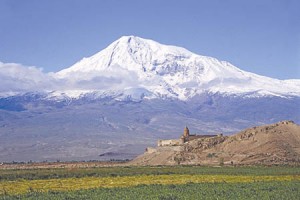Tamar Karkazian
Editor

On a recent trip to Armenia I found myself gazing out the window, watching the beautiful terrain of my homeland, and reflecting upon the question: what does it mean to be an “Armenian”? I couldn’t quite come up with one definition, one set of guidelines, one concrete answer.
Looking around the bus, I was surrounded by 14 unique individuals, all with different personalities, interests, and hobbies, but with one common link—being Armenian. It was at that moment that I decided that there isn’t just one way to prove how Armenian you are. There isn’t one characteristic that defines your Armenian identity but rather it’s an attitude that envelopes you.
Being Armenian isn’t necessarily how well you can speak the language, how well you can read or write Armenian, how involved you are, or how traditional your family is but rather why you do those things. It’s the effort you make to maintain your sense of Armenian identity. For some people, maintaining that sense of culture comes from the language, for others it comes from their involvement. Neither is right or wrong; it just depends on you, the individual, and how you want to define yourself as an Armenian.
For me personally, I defined my sense of Armenian identity with my involvement in the Armenian community. For my friend, it was her sense of family, and yet for others it was how well they have preserved the language.
Working with various Armenian organizations over the past several years, this question of identity not only sparked my interest but also my concern. In our attempt to strengthen and unify the Armenian people, are we instead further dividing ourselves?
To gain a better understanding of other people’s opinions on this topic I asked members of different organizations—ASO, ACYO, and AYF—what their thoughts were about being Armenian. I found that despite the differences in details they all shared the same idea. In nearly every response I got I found a common thread—a sense of activeness in being Armenian. Some groups felt this “activeness” was expressed in attitude, others in participation, and yet others in the type of work.
To me, it seems that often times the Armenians, as a culture, try so hard to define what it means to be Armenian, to create guidelines, that they fail to realize that by doing so they are closing themselves off from different Armenians. We are often too caught up in the details that we forget the bigger picture; we are all Armenian, we all love our culture and our history, and we are all trying to preserve and maintain our culture.
My hope is that in the near future, we can put these definitions aside and realize that we all want the same thing, and in order to reach those goals we must come together, as a people, and help each other thrive.
 Hye Sharzhoom Armenian Action
Hye Sharzhoom Armenian Action